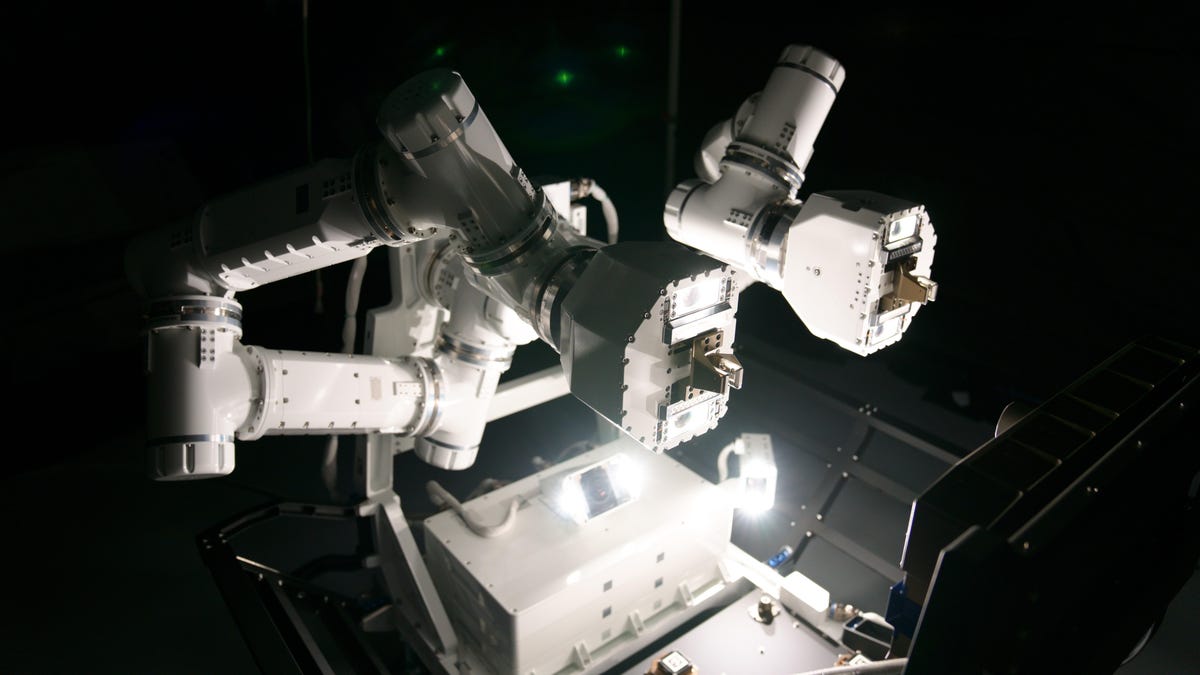Astronauts on board the International Space Station (ISS) are about to make a new cyborg friend in the form of two short mechanical arms that will do their bidding in the cold, dark vacuum of low Earth orbit.
California-based startup GITAI is launching its 4.9-foot-long (1.5-meters) autonomous dual robotic arm system, called S2, to the ISS as part of NASA’s 20th commercial resupply mission. S2 will ride on board SpaceX’s Cygnus cargo spacecraft, which will be carried atop a Falcon 9 rocket. The launch is set to take place on Monday at 12:29 p.m. ET from Cape Canaveral Space Force Station in Florida.
Once they reach space, the robot arms will be attached to the outside of the space station’s Nanoracks Bishop Airlock for their first in-space demonstration. S2 is designed to carry out maintenance, inspection, assembly, and life-extension operations for satellites, according to GITAI. The robot arms also have a handy tool changer installed.
Following tests on Earth, GITAI is hoping to prove the capabilities of its cyborg friend in space so that it can provide its on-orbit services for satellites and future commercial space stations in low Earth orbit and geostationary orbit. “The success of this demonstration will be a major milestone for GITAI, confirming the feasibility of this technology as a fully operational system in space,” Sho Nakanose, founder and CEO of GITAI, said in a statement.

The ISS already has two cyborg arms, the 37-foot-long (11.2 meters) European Robotic Arm and the 58-foot-long (17.6 meters) Canadarm2. Europe’s gigantic machine launched to space in July 2021, and is able to anchor itself to the space station and walk back and forth by moving one hand over the other. Europe’s big arm is primarily used for transporting payloads, and sometimes spacewalking astronauts, from one part of the ISS to another. The trusty Canadarm2, which has been around for more than 20 years, moves equipment and services instruments on board the ISS.
The S2 will now join the mechanical arm gang as GITAI’s second technology demonstration on the ISS, the first being an autonomous robot that carried out two common crew activities on board the ISS: operating cables and switches and assembling structures and panels. The company is also designing a lunar rover to help out astronauts on the Moon by building habitats, installing solar panels, or shoveling ice.
For more spaceflight in your life, follow us on X (formerly Twitter) and bookmark Gizmodo’s dedicated Spaceflight page.

